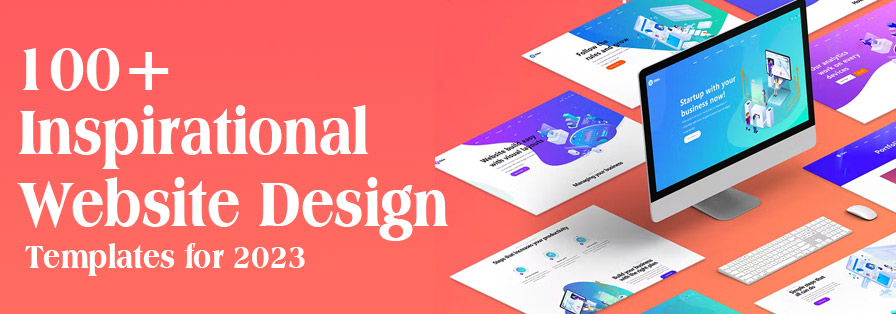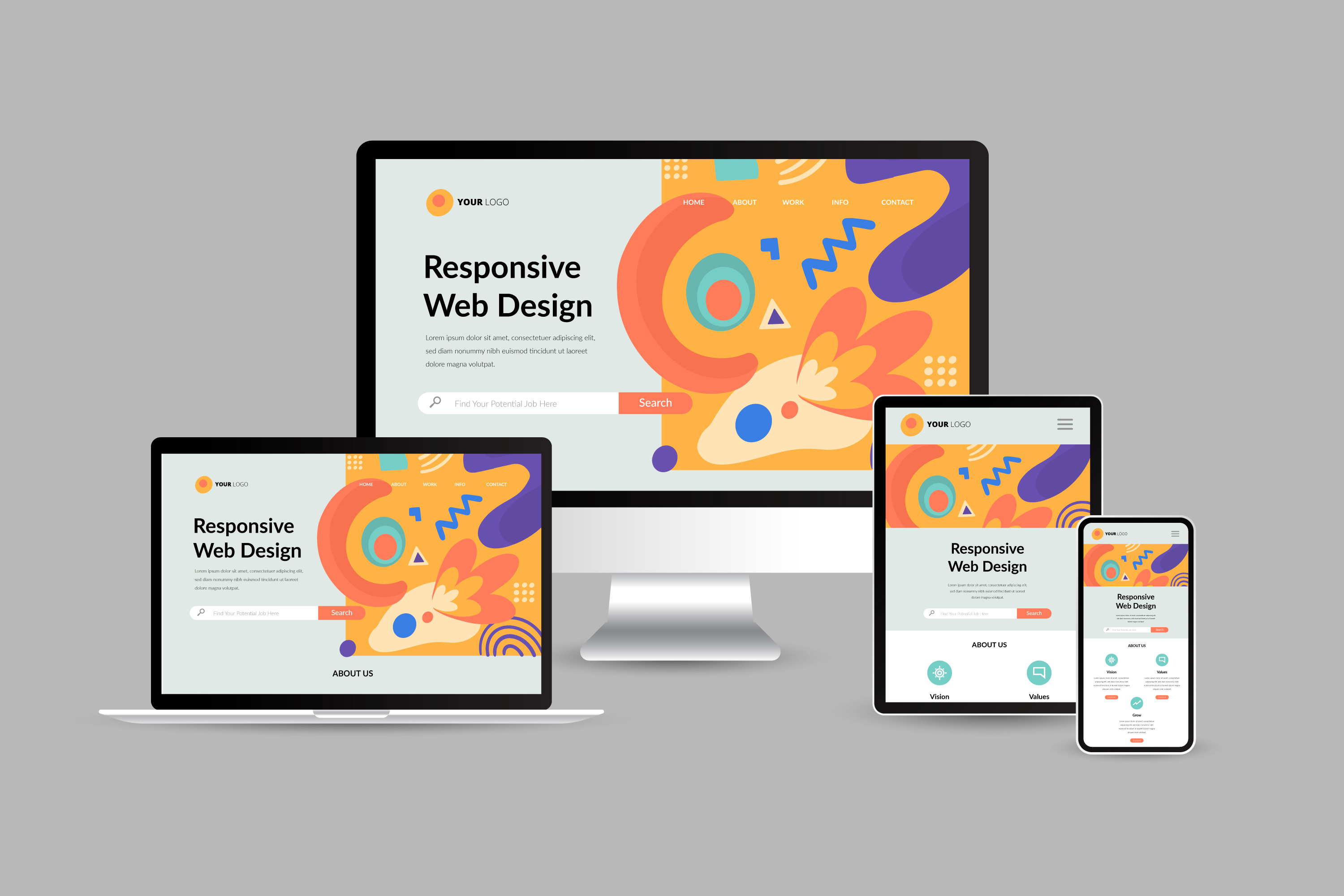Why Responsive Website Design is Essential for Modern Online Success
Why Responsive Website Design is Essential for Modern Online Success
Blog Article

Crafting a User-Friendly Experience: Vital Elements of Reliable Site Design
Necessary aspects such as a clear navigating framework, receptive style concepts, and fast loading times offer as the foundation for involving customers properly. Understanding the underlying aspects that add to reliable design can drop light on just how to enhance customer fulfillment and engagement.
Clear Navigating Framework
A clear navigation structure is basic to efficient website style, as it straight affects user experience and involvement. Individuals need to be able to find info effortlessly, as user-friendly navigating lowers irritation and encourages expedition. An efficient format permits visitors to comprehend the connection in between various pages and web content, leading to longer site brows through and enhanced interaction.
To accomplish clearness, designers ought to utilize familiar patterns, such as side or leading navigating bars, dropdown food selections, and breadcrumb routes. These aspects not just enhance usability but additionally supply a sense of positioning within the site. Preserving a consistent navigation framework throughout all pages is critical; this familiarity aids customers prepare for where to discover wanted details.
Additionally, integrating search functionality can better assist customers in locating details content promptly. In summary, a clear navigating structure is not merely a style selection; it is a tactical component that significantly affects the total success of an internet site by fostering a enjoyable and efficient user experience.
Responsive Design Concepts
Reliable website navigation sets the phase for a seamless user experience, which ends up being much more critical in the context of receptive style principles. Responsive design guarantees that sites adjust fluidly to different screen dimensions and positionings, improving availability throughout tools. This flexibility is accomplished through adaptable grid layouts, scalable pictures, and media inquiries that permit CSS to readjust styles based upon the tool's qualities.
Trick principles of responsive style consist of liquid formats that make use of percents as opposed to dealt with units, guaranteeing that aspects resize proportionately. In addition, using breakpoints in CSS enables the layout to change smoothly in between different tool sizes, maximizing the format for each screen kind. The usage of receptive images is also necessary; photos ought to instantly get used to fit the display without shedding high quality or triggering format changes.
Moreover, touch-friendly user interfaces are vital for mobile customers, with appropriately sized switches and user-friendly gestures boosting customer interaction. By integrating these concepts, designers can produce sites that not just look aesthetically pleasing but additionally give appealing and useful experiences throughout all gadgets. Eventually, effective receptive design promotes user contentment, decreases bounce prices, and motivates longer involvement with the material.
Fast Loading Times
While users significantly anticipate internet sites to fill quickly, quick loading times are not just a matter of ease; they are necessary for keeping visitors and boosting general individual experience. Research study indicates that users commonly abandon sites that take longer than 3 secs to load. This abandonment can lead to boosted bounce prices and reduced conversions, inevitably harming a brand's online reputation and profits.
Rapid packing times boost user interaction and contentment, as site visitors are more probable to explore a website that reacts quickly to their communications. Furthermore, internet search engine like Google prioritize rate in their ranking algorithms, suggesting that a slow web site might have a hard time to accomplish presence in search engine result.

Intuitive Interface
Rapid packing times lay the foundation for an engaging online experience, yet they are just part of the equation. An intuitive individual interface (UI) is necessary to guarantee site visitors can browse a web site easily. A well-designed UI enables customers to accomplish their goals with minimal cognitive look at here tons, promoting a seamless interaction with the website.
Crucial element of an user-friendly UI include regular design, clear navigation, and recognizable symbols. Consistency in design aspects-- such as color pattern, typography, and switch styles-- assists individuals understand just how to communicate with the website. Clear navigation frameworks, including sensible menus and breadcrumb tracks, allow customers to discover details swiftly, reducing disappointment and enhancing retention.
Additionally, feedback devices, such as hover impacts and loading indications, notify customers about their actions and the site's feedback. This transparency cultivates trust fund and encourages ongoing engagement. Moreover, prioritizing mobile responsiveness guarantees that customers take pleasure in a natural experience across devices, dealing with the varied ways audiences accessibility web content.
Available Web Content Guidelines

First, make use of clear and straightforward language, avoiding lingo that try these out might perplex visitors. Highlight proper heading frameworks, which not only help in navigating however also assist display viewers in analyzing content power structures properly. In addition, give alternate message for pictures to share their definition to customers that rely upon assistive innovations.
Contrast is one more critical component; make certain that text stands out versus the history to improve readability. Make sure that video and audio material includes records and subtitles, making multimedia accessible to those with hearing disabilities.
Last but not least, integrate key-board navigability into your layout, enabling individuals that can not use a computer mouse to access all website features (website design). By sticking to these accessible material standards, web developers can create inclusive experiences that provide to the requirements of all users, eventually boosting user interaction and complete satisfaction
Conclusion
Finally, the combination of necessary aspects such as a clear navigating structure, receptive layout principles, fast packing times, an user-friendly user interface, and obtainable web content standards is crucial for producing an easy to use website experience. These elements jointly improve functionality and involvement, making certain that users can easily navigate and communicate with the site. Focusing on these style aspects not only improves total contentment but also promotes inclusivity, suiting varied user needs and choices in the electronic landscape.
A clear navigating structure is fundamental to reliable website design, as it straight affects customer experience and interaction. In summary, a clear navigation structure is not simply a design choice; it is a calculated aspect that substantially impacts the general success of a website by promoting a satisfying and effective user experience.
In addition, touch-friendly user interfaces are essential for mobile users, with adequately sized switches and intuitive gestures enhancing customer interaction.While customers progressively anticipate websites to fill rapidly, quickly filling times are not just an issue of comfort; they are crucial for preserving Look At This visitors and boosting overall customer experience. website design.In final thought, the combination of important components such as a clear navigation structure, responsive layout principles, quickly loading times, an instinctive customer interface, and easily accessible content guidelines is essential for creating an easy to use site experience
Report this page